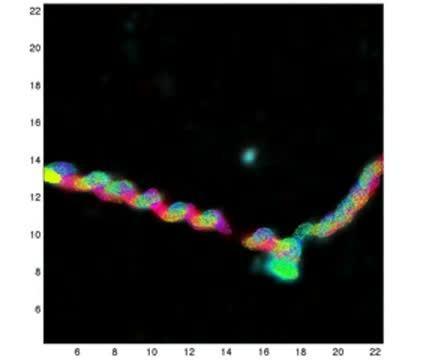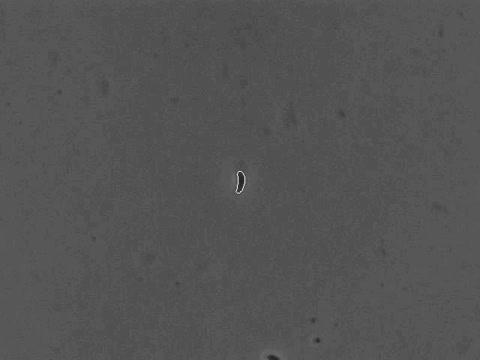In taking that closer look, the researchers noticed that the cell body traces a wobbly, helical trajectory as it moves—a trajectory that looks a bit like the body is traveling though an invisible spiral tube. The spiral was less pronounced when the bacteria go in reverse compared to when they go forward. Using a mathematical model based on "resistive force theory", the researchers show that the thrust produced by the different body motions accounts for the differences in swimming speed. The bacterial body, it turns out, is more than just a docile passenger.
The finding could shed new light on the evolution of cell body shape, Breuer says.
"There are big questions as to why certain species have certain cell shapes," he said. "This might lead to some answers there."
The researchers also plan to use their imaging technique to look at swimming dynamics in other types of bacteria and in more complex fluids, like mucus.
"Real fluids like mucus or gel have complex properties and we want to continue this work into that realm," Breuer said. "All of this helps to explain how bacteria are adapted to swim in certain conditions and that has application to disease propagation and even to fertility, because a lot of this applies to sperm as well."

The cellular bodies of C. crescentus bacteria follow a helical trajectory as they swim. Researchers have shown that the motion generates thrust. Before this, it was thought that the cell body contributes nothing to swimming in organisms like crescentus that swim using flagella.
(Photo Credit: Breuer Lab / Brown University)

To investigate how bacteria swim, Brown University researchers used a tracking microscope that keeps bacteria in the scope's view as it swims.
(Photo Credit: Breuer Lab/ Brown University)

The image traces the helical trajectory followed by the bodies of bacterial cells as they swim. Researchers have shown that the motion generates thrust. Before this, it was thought that the cell body contributes nothing to swimming in organisms that swim using flagella.
(Photo Credit: Breuer Lab/Brown University)
Source: Brown University